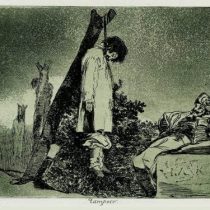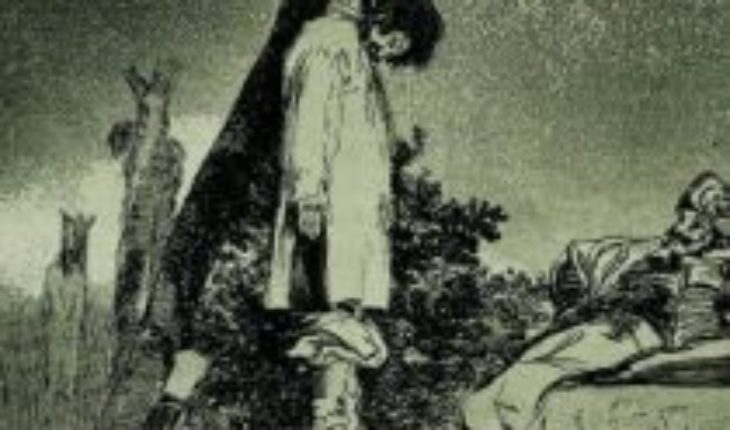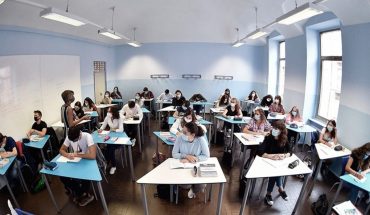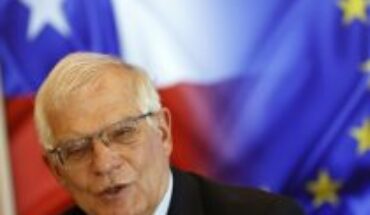
L’arte nel suo mistero,
le diverse bellezze insiem confonde…
(Art, in its mystery,
merges the two beauties and confuses them…)
Mario Cavaradossi, in Recondita armonia, initial issue of Tosca by G. Puccini
Where is the point of intersection between music and poetry? Is a literal translation possible? Or is it more of a correspondence of symbolic codes?
In the delicious and secluded mystery that surrounds the art world there is still some loophole to rationalize all those processes and structures that allow us to access its hidden messages, in this case, to the fusion between text and sound.
Artistic syncretism
So we’re talking about a literal, full, word-for-word translation? No, because it is the symbolic language itself, capable of emerging in any artistic branch, who shows and hides the intentions of the author at all times. Sometimes even the syncretism of several of them, as we will see below.
Music, the most asemantical of the arts (Adorno), the most unreal (Furtw’ngler), therefore escapes literal translation, but also poetry, which flees from everyday language on the path of symbolic language. Let’s look at a verse by Federico García Lorca, belonging to the poem The Poet speaks on the phone with sonnets’ love of dark love.
Your voice withded the dune of my chest
No one would think that the poet had his torso covered in sand and that the water fell from the lover’s mouth. That voice aroused unsuspected emotions within the poet, dead, barren, lonely… Precisely, with the same surprise that arouses the rain, fall from the sky, on the dunes of the desert.
Baudelaire and synesthetic
Baudelaire addressed the issue in his sonnet Correspondances, fourth poem by Les fleurs du mal (1857) – the presence of the term dances [fonéticamente, equivalente a danses, danzas] it is a statement of intent regarding the rhythm and sound effects of his poetry– where he presents synest antics as artistic correspondences based on the symbolic:
Correspondances
La Nature est un memper o’ de vivants piliers
Laissent parfois sort of confuses paroles;
L’homme & Passe s travers des forts de symboles
Qui l’observent avec des regards familiers.
Comme de longs échos qui de loin se confondent
Dans une ténébreuse et profonde unité,
Vaste comme la nuit et comme la clarté,
Les parfums, les couleurs et les sons se répondent.
Il est des parfums frais comme des chairs d’enfants,
Doux comme les hautbois, verts comme les prairies,
Et d’autres, corrompus, riches et triomphants,
Ayant l’expansion des choses infinies,
Comme l’ambre, le musc, le benjoin et l’encens,
Qui chantent les transports de l’esprit et des sens.
(Nature is a temple where living pillars
sometimes let out their confused words;
over there passes man through forests of symbols
who watch him attentively with familiar gaze.
Like very long echoes from far confused
in a dark and deep unity,
vast as night, like clarity,
perfumes and colors and sones are answered.
There are perfumes as fresh as children’s meats,
sweets like oboe, green as meadows,
and there are others corrupted, rich and triumphant,
that expansion possesses infinite things,
like musk, amber, benjuí and incense,
singing the transports of the soul and the senses.)
In this way, we can draw various points of encounter between music and poem: in “shared” parameters, in correspondences that can be moved from one language to another, such as form, structural rhythm, internal combinations, atmosphere, hidden symbols, Etc.
The hangman, in words and in music
Next, we will stop at Aloysius Bertrand’s poem Le Gibet (The Hangman), belonging to the Gaspard de la nuit collection, which was published by the same in 1836 and musiced by Ravel in 1908, in his eponymous piano triptych.
The poet’s gaze towards the past, specifically the Middle Ages, evokes various images of fantastic cut together with prose versification – so important and modern for finisecular poetic currents – with a particular vision of the transferred chiaroscuro from text to sound, not in vain, the poem was subtitled Fantaisies’ la maniére de Rembrandt et de Callot.
Le Gibet is presented with a rhetorical question from Goethe’s Faust, which will be answered in the course of the poem:
What vois-je remuer autour de ce gibet?
(What do I see moving around that scaffold?)
The whole text is a concentric repetition of the same rhetorical question in pursuit of the description of the gallows and its sinister surroundings, with a subtle contrast between imagination and reality, but also between light and darkness. It is a recreation of the style in the etching of Callot, who represents the pendu two hundred years before Bertrand, in his work Les miséres et les malheurs de la guerre. It is a series of engravings on the disasters of the Thirty Years’ War, published in 1633.
Callot, La pendaison, 11th print of Les miséres et les malheurs de la guerre. Wikimedia CommonsPrecisamente, Callot inspired Goya’s series The Disasters of War (1810-1815), depicting new victims of violence:
Goya, neither, stamp 36th of The Disasters of War. Wikimedia Commons Musical version
In the musiced version of Ravel, without text, we find the sordid swing of the hangman in an ostinato – a syncopated model that is repeated from start to finish in the note b flat – next to a medieval halito, represented in the design of overlapping fifths of the left hand , as in the organum, the first polyphonic form of history, which shortly before Debussy recreated in the Cathédrale engloutie (Préludes I).
Score by Le gibet, by Maurice Ravel. ImslpEn Le Gibet is appreciated the representation of chiaroscuro, with an inexhaustible range of subtle oppositions at various structural levels, in black or white harmonic areas – according to the configuration of the white or black keys of the piano – which finds its replica in the main metaphor of the poem, the irresolute dichotomy between fantasy or reality, the great chiaroscuro of the text.
In this way, we can appreciate this shared sensibility between poem and sound, between Bertrand and Ravel, through symbolic language, whose secret remotes, probably have only just begun to glimpse.
Marta Vela, Professor of the Degree in Music, UNIR – International University of La Rioja
This article was originally published in The Conversation. Read the original.





